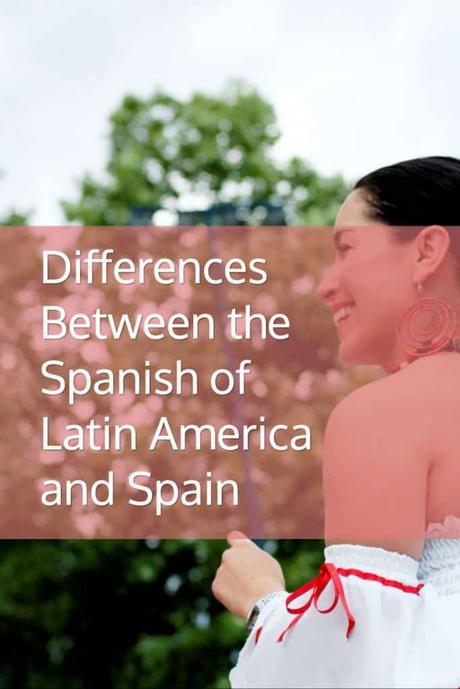Most students of Spanish today eventually ask the same question, "Should I learn Latin American Spanish or Spanish from Spain?". Another common question is "What are the differences between the two types of Spanish?"
Let's take a look at the differences between the Spanish spoken on two different sides of the Atlantic ocean. We'll also take a look at the benefits of learning one over the other.
The Spanish of Spain
Castillian Spanish is the language spoken in most of the Iberian Peninsula of Europe. Spain, as with most countries in Latin America, has a wide variety of accents and regional dialects. The Spanish of radio, newspapers, tv, and government in the Castillian variety. Some would call it the purest version of original Spanish.
The Spanish of Latin American
Latin American Spanish is, of course, derived from the old country but over the centuries, the language has taken on its own forms, slang, and even grammar rules. Think about that last one. By contrast, there are few grammatical differences between US English and British English.
Which Spanish to Learn?
Spanish has evolved over the centuries on both sides of the world. Each country's version of the language has evolved almost independently. Now with the Internet, there's probably less chance of this happening. The world is more global and individual dialects are influenced by the Spanish-speaking community as a whole.
If you want to communicate with the most number of people in their own dialect, the obvious choice is Mexican Spanish. Mexico is the most populous Spanish-speaking country in the world and the official figure of 127 million doesn't include native speakers in the United States.
Latin American Spanish is easier to learn. That's my opinion. Other learners, teachers, and academics might have other opinions.
Here are the main differences between Castillian and Latin American Spanish:
Forms of Address
You can forget about Vosotros. A relief for many beginners as dropping the "All You" plural, informal version of address removes some complexity.
Spanish in the mother country uses four forms or modes of address:
Tú - Informal You Singular. Used among family, friends, or when addressing children & animals.
Vosotros - Informal You Plural. Used when talking with friends or children.
Usted - Formal You Singular. Used when addressing an older person, your boss, or someone important.
Ustedes - Formal You Plural. Used when addressing more than one important person or senior.
Latin American Spanish, on the other hand, does away with Vosotros so we're left with
Tú
Usted
Ustedes - Used to address more than one person in any situation. Easy.
In some parts of Latin America (Argentina, Uruguay, Colombia, Costa Rica) you will come across 'Vos', which is like Tú. Don't let that confuse you too much. Vos is even easier to conjugate than Tú so if you must learn it, welcome the change.
Leísmo
I'll try to make this one as simple as possible.
Many Spanish people use le or les when referring to people as a direct object. This is not strictly speaking the correct use of the form. Here's an example:
Le vi a Pablo ayer - I saw Pablo yesterday.
This sentence uses 'le' to refer to Pablo. This sentence used an indirect object pronoun used to refer to a person (Pablo). The direct object pronoun should be used. e.g. Lo vi a Juan Ayer. In Latin America, 'lo' or 'la' is always used. In Spain you might hear both variations. Again, the Spanish from the Americas is a little bit less complicated.
Vocabulary changes
If you've studied in Europe you might be familiar with these terms:
Carro
Colombian Spanish spoken in Bogotá is sometimes referred to as the purest form of Spanish. There's no real evidence online as to where this piece of information came from. It's possibly one of those internet myths that spread as one blogger or researcher copies another. From my own experiences, the language of Bogotanos is generally clear and easy to understand.
Like this post? Pin It 🙂

And finally, this fantastic video by two Colombian musicians offers a humorous look at the differences between the different dialect of Spanish and how it can make things difficult for speakers.

